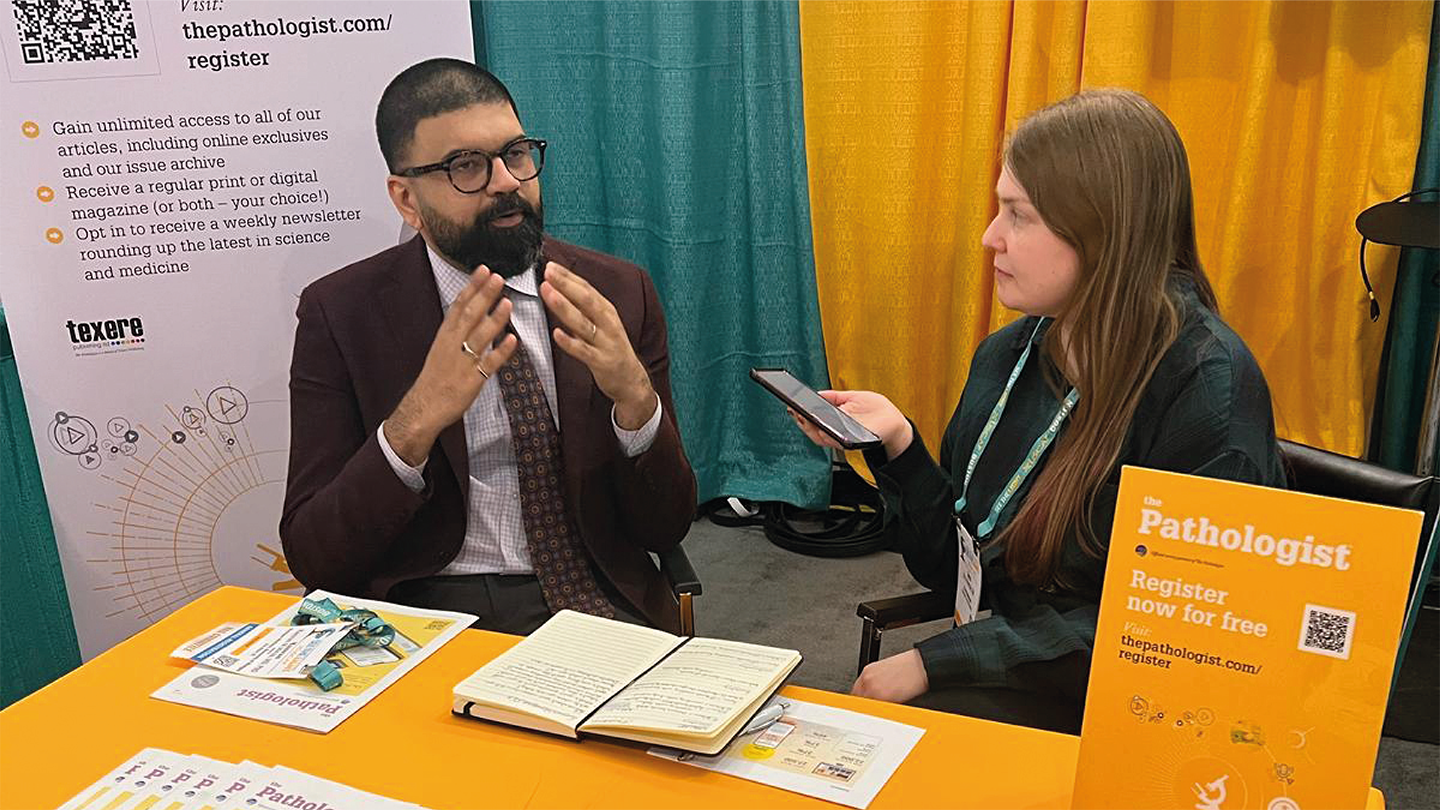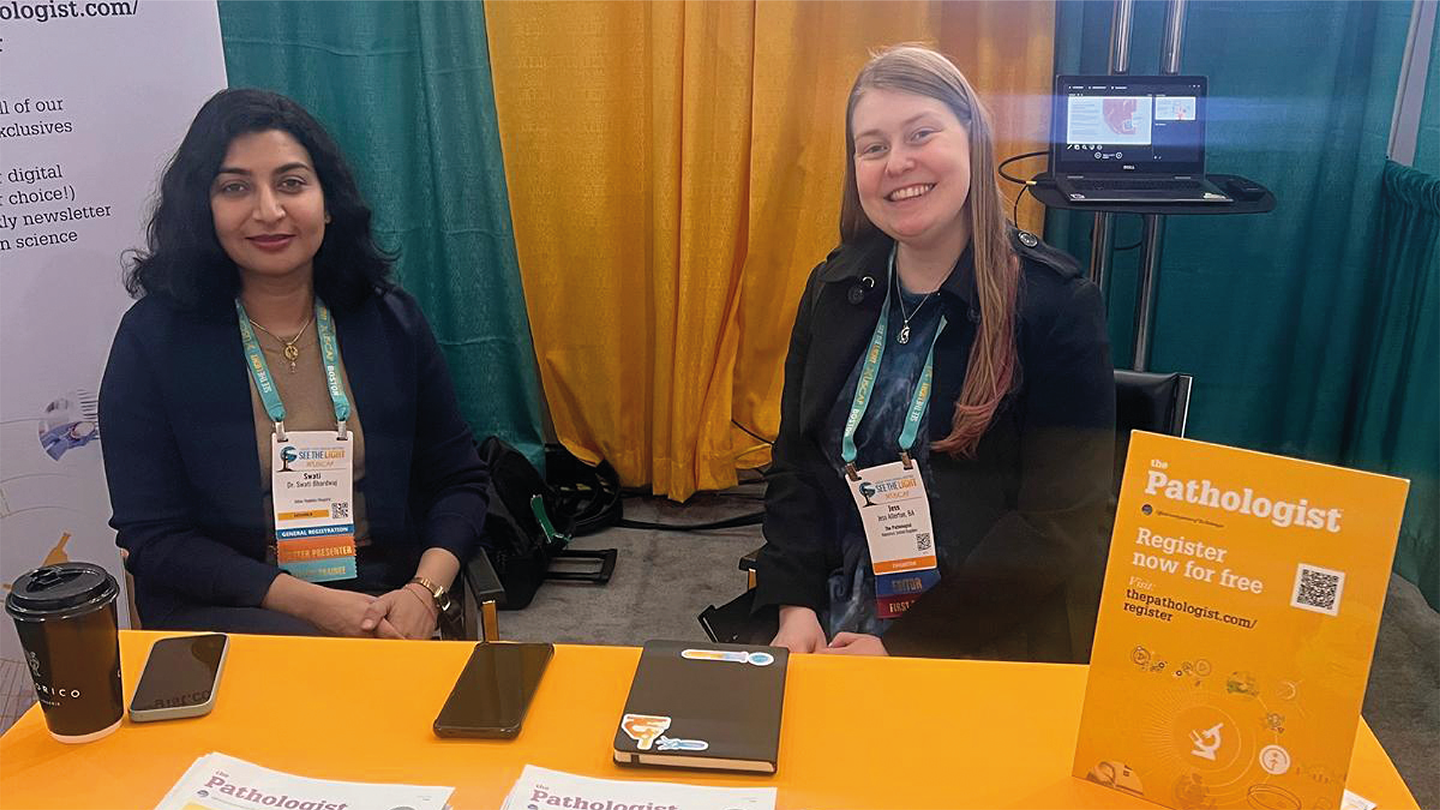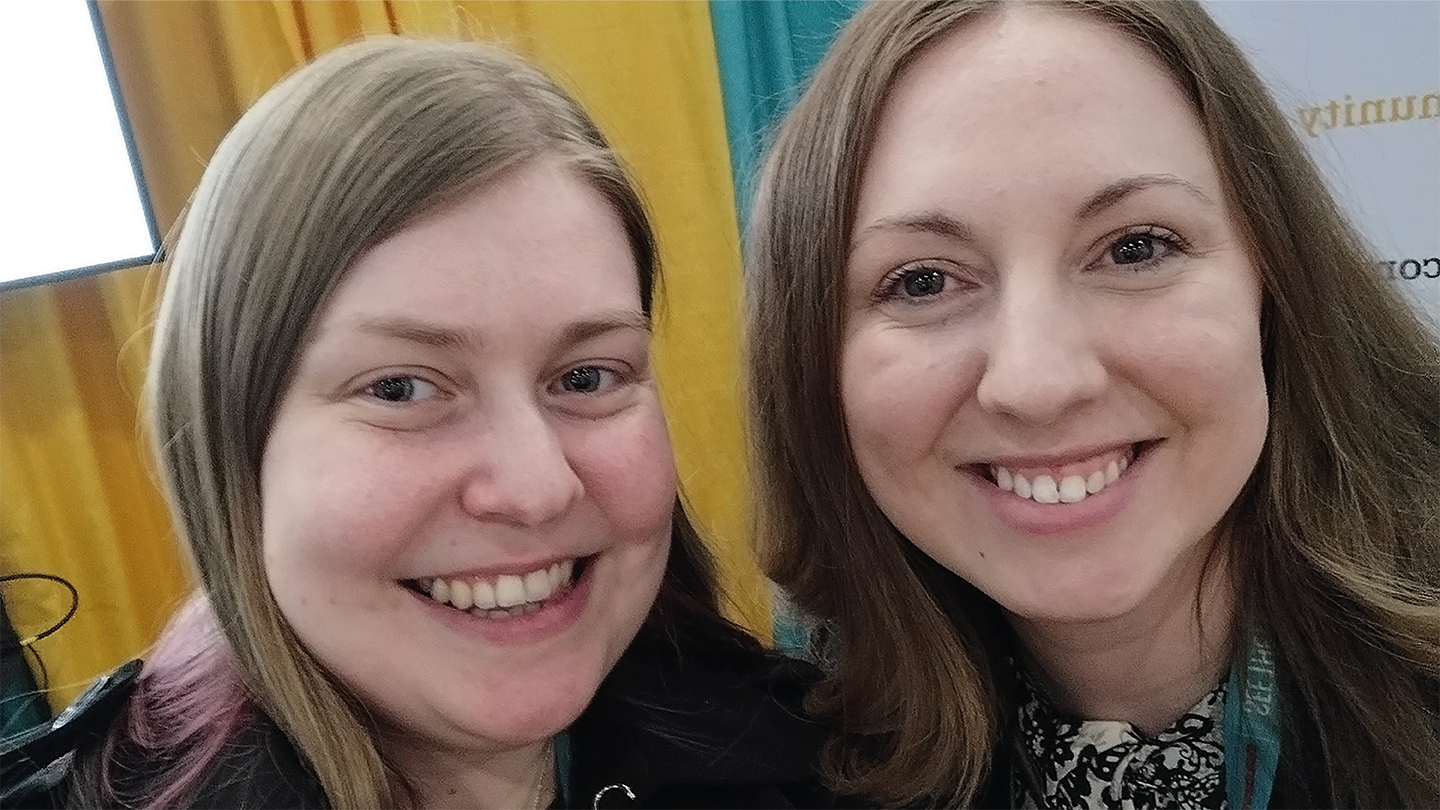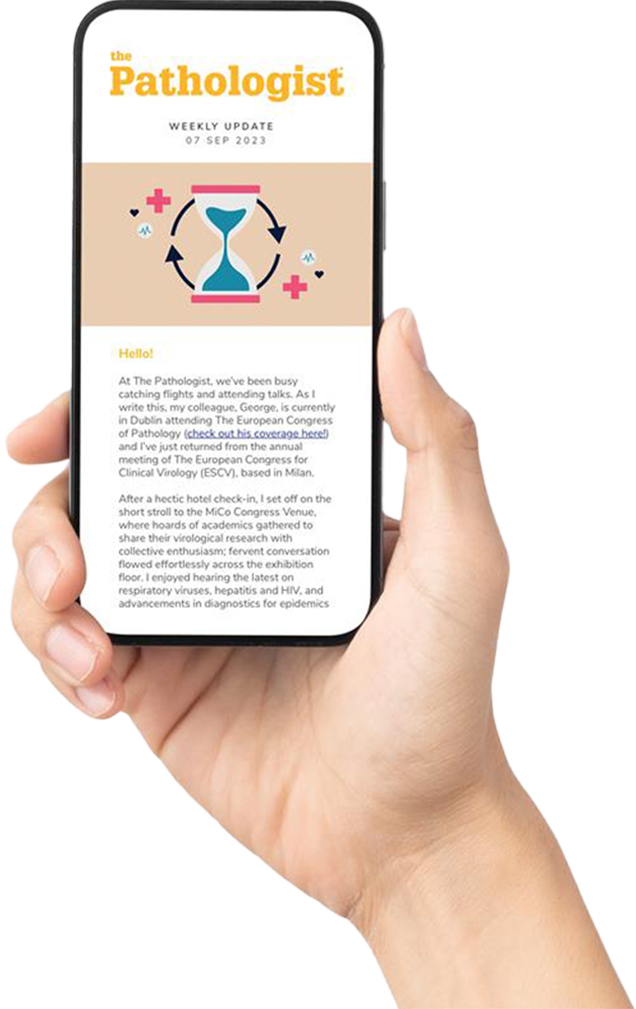
As the dust settles on the United States and Canadian Academy of Pathology (USCAP) 2025 meeting, I wanted to share some of my personal highlights from this year’s event.
Firstly, I wanted to express my thanks and appreciation to all of our readers and collaborators who took the time to pay a visit to The Pathologist booth. It was extremely humbling to hear your kind words about our content and approach. We also enjoyed some fascinating conversations on what the future holds for various subspecialties and the field as a whole.

Events like USCAP are the perfect place for catching up with colleagues, and I took the opportunity to call on some friends of The Pathologist while we were all in attendance. A special thanks to Kamran Mirza, Meredith K. Herman, Nicole R. Jackson, and Swati Bhardwaj for your continued collaboration. We’ll be sharing the articles that emerged from these conversations in the upcoming weeks, but I’ll leave you with a quick teaser of one of the emerging themes:
“Many people don’t understand the jigsaw puzzle that pathologists are. And since they don’t understand us, we’re not valued or leveraged correctly. As a specialty, we’re very ‘out of sight, out of mind’ – an afterthought despite the importance of what we do…”
Alongside these discussions, I spent time learning about the latest research and initiatives across pathology. From educational approaches to residency, to new histopathology imaging techniques, there’s certainly a plethora of exciting innovations that could open avenues across diagnostics.
It was encouraging to see residents and training clinical professionals highlighted in many of these sessions, including studies exploring trends in residency applications and mixers for individuals to connect with others and share their experiences. I particularly enjoyed the Education Platform session on Monday afternoon, despite technical issues with the projectors, which ironically occurred in a talk based on leveraging digital applications!
There were also plenty of talks focused on AI and digital pathology, showcasing the opportunities and challenges of adopting new technologies in the lab. We’re working closely with some of the individuals behind these studies, so keep your eyes peeled for incoming content!

USCAP invited some truly inspirational speakers for its Timely Topics lectures and the Luminaries in Pathology sessions this year. I particularly enjoyed Bogdan Pasaniuc’s talk, which highlighted the shift to computational pathology and the emergence of polygenic scores (PGS) as the tool of choice in predicting complex disease traits.
What were your highlights of USCAP 2025? Is there a particular topic or study you learned about that we should be covering? Let us know: edit@thepathologist.com




